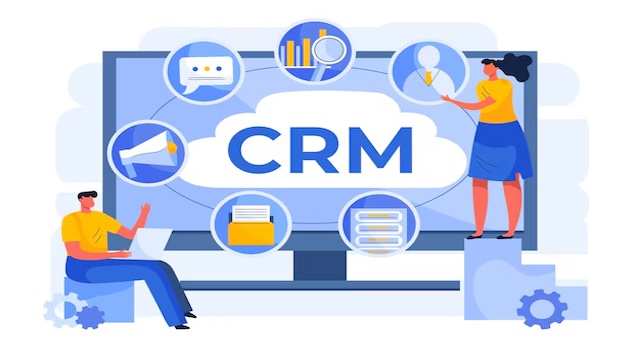CRM
Voice and Conversational Interfaces in CRM

Voice and Conversational Interfaces: The Future of CRM Interaction
Imagine updating your CRM by simply speaking to it. “Add follow-up call with Sarah next Friday,” you say — and it’s done. No clicks, no menus, no manual entry. This isn’t science fiction; it’s the reality of voice and conversational CRM technology. As artificial intelligence and natural language processing (NLP) continue to evolve, CRMs are becoming more intuitive, interactive, and accessible than ever before.
The Evolution of CRM Interaction
For decades, CRM systems were data-heavy and time-consuming. Sales representatives often spent hours entering notes, updating pipelines, and generating reports — administrative work that detracted from actual selling. The introduction of AI-powered automation started to change that, but conversational interfaces are taking it a step further by eliminating friction altogether.
Through voice commands, chat interfaces, and virtual assistants, users can now interact with CRM systems as naturally as they would with a colleague. This conversational paradigm represents a fundamental shift in how people work with technology — moving from structured input to human-like communication.
Defining Voice and Conversational CRM
At its core, a voice-enabled CRM uses AI and speech recognition to understand spoken commands, while a conversational CRM integrates chatbots and messaging interfaces to execute actions based on natural language. Together, these technologies make CRM usage faster, smarter, and more human-centric.
For example, a salesperson can dictate meeting notes after a call, and the CRM automatically logs them under the correct contact record. A manager can ask, “Show me my top five deals for this quarter,” and receive an instant dashboard update. Customer service agents can resolve inquiries through AI-driven chatbots integrated directly into the CRM.
Key Technologies Powering Conversational CRMs
Several technological advancements are enabling this transformation:
- Natural Language Processing (NLP): Interprets and understands spoken or written language, enabling the CRM to process commands and questions naturally.
- Speech-to-Text Engines: Converts voice input into structured data for processing within the CRM.
- Machine Learning Models: Continuously learn user preferences, improving accuracy and personalization over time.
- Conversational AI: Manages dialogue flow and context to maintain coherent, human-like conversations.
- API Integrations: Connects voice assistants (like Alexa, Google Assistant, or custom bots) directly with CRM databases and workflows.
These components work together to turn voice and chat input into real business actions — from scheduling meetings to sending follow-up emails to generating predictive reports.
Productivity Gains Through Voice Interaction
The impact of voice-driven CRM extends beyond convenience; it’s fundamentally transforming productivity. Studies show that sales representatives spend up to 25–30% of their time on administrative tasks. Conversational CRM automation can cut that in half by handling data entry, note-taking, and report generation automatically.
Field reps, for example, can log updates during commutes or between client meetings without touching their devices. Customer support teams can triage incoming issues using voice-enabled ticketing commands. Even executives can pull live performance insights hands-free during meetings — all powered by conversational CRM systems.
Enhancing Accessibility and Inclusivity
Voice and conversational interfaces also make CRMs more accessible to a broader range of users. Employees with limited technical skills or disabilities benefit from hands-free navigation and speech input. This inclusive approach democratizes access to CRM functionality, allowing more people across the organization to engage with customer data effectively.
Moreover, multilingual NLP capabilities enable global teams to interact with CRMs in their native languages — a major advantage for multinational enterprises managing diverse markets.
Conversational CRM in Action: Real-World Examples
Several leading CRM vendors are already integrating voice and conversational features into their platforms:
- Salesforce Einstein Voice: Enables users to dictate updates, schedule follow-ups, and access analytics dashboards via voice commands.
- HubSpot ChatSpot: Combines conversational AI with HubSpot’s data ecosystem, allowing users to query CRM data and automate actions through natural language chat.
- Zoho Voice: Integrates with Zoho CRM to enable voice logging, AI transcription, and call analytics.
- Microsoft Viva Sales: Uses AI and Teams integration to capture conversation data and automatically populate CRM fields.
These examples highlight a growing trend: CRMs are no longer passive systems; they’re intelligent collaborators embedded in everyday workflows.
Voice CRM and the Customer Experience
Conversational interfaces aren’t just improving internal productivity — they’re also transforming customer engagement. AI-powered chatbots, integrated directly with CRM data, provide instant responses and context-aware assistance. Customers no longer wait for human agents to check records; conversational AI can surface relevant information and resolve queries autonomously.
This capability extends beyond service desks. Sales bots can qualify leads through natural conversations on websites or messaging apps. Marketing teams can deploy conversational campaigns that adapt dynamically based on customer responses. Each interaction becomes more personalized, fluid, and data-driven — all powered by the CRM’s intelligence layer.
Challenges: Accuracy, Privacy, and Change Management
Despite its promise, voice and conversational CRM adoption isn’t without challenges. Speech recognition still struggles with accents, noise, and domain-specific jargon, leading to occasional errors in transcription or command interpretation. Data privacy also remains a critical concern, especially when voice data is stored or processed through third-party APIs.
Additionally, some teams may resist shifting from traditional interfaces to conversational workflows. Effective change management and training are essential to ensure adoption and trust. As with any AI-enabled technology, transparency and explainability will determine long-term success.
The Road Ahead: Predictive and Context-Aware Conversations
The next generation of conversational CRMs will go beyond reactive responses to deliver predictive, proactive interactions. Imagine a CRM that not only understands commands but anticipates them. Before a meeting, it might brief a sales rep on the client’s recent transactions or alert them to open support tickets. Afterward, it could automatically generate summaries, update pipeline forecasts, and send thank-you notes — all without being asked.
In addition, sentiment analysis will become a core component of conversational CRM systems. By evaluating tone and emotion in voice interactions, CRMs will be able to assess customer satisfaction in real time and recommend tailored follow-up actions.
Conclusion: From Data Entry to Dialogue
Voice and conversational interfaces are redefining what it means to “use” a CRM. As systems become more intuitive, they fade into the background — empowering users to focus on customers, not software. The future of CRM lies in conversation: human-like interactions that blend AI intelligence with natural communication. In 2025 and beyond, the most successful organizations will be those that embrace CRM chatbot assistants and voice-driven workflows as standard tools of engagement — making relationship management as effortless as saying, “Hey CRM, what’s next?”






